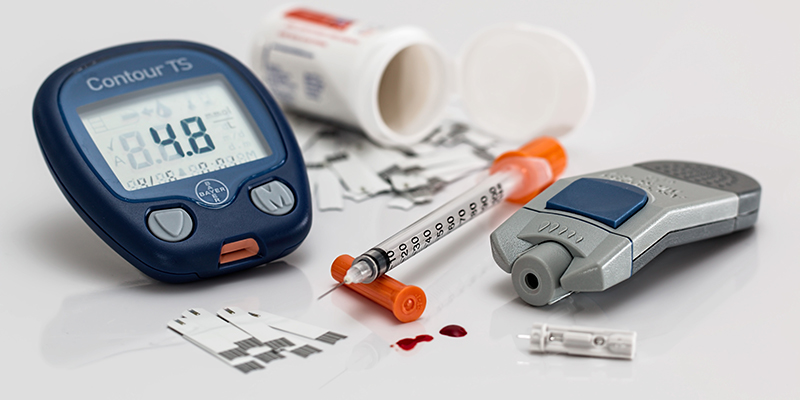Diabetes mellitus, commonly known as diabetes, is a condition in which your body can’t regulate the amount of glucose in your blood. Glucose—or blood sugar—is an important source of the energy your body needs to function, but having too much glucose in your blood for long periods of time can lead to serious health problems, including cardiovascular disease, nerve damage, and blindness.
Diabetes appears in three forms: type 1, type 2, and gestational diabetes.
Type 1
Usually diagnosed in children and adolescents, type 1 diabetes is triggered when the body’s immune system fights harmful bacteria and viruses and, in the process, accidentally destroys the cells that produce insulin. Without insulin, the body can’t regulate glucose levels in the blood, and blood sugar levels spike. If left untreated, type 1 diabetes can be fatal.
Type 2
Type 2 is the most common, occurring in 90-95% of diabetics. Although type 2 is also known as adult-onset diabetes, one in four children have type 2 diabetes. In this form of diabetes, the body resists the effects of insulin or doesn’t produce enough to maintain a normal glucose level. Obesity and inactivity increase your risk of developing type 2 diabetes.
Gestational Diabetes 
Gestational diabetes occurs in the late stages of pregnancy, affecting women who didn’t have diabetes before becoming pregnant. This form of diabetes will likely go away after the pregnancy, but having gestational diabetes elevates your risk for developing type 2 diabetes in the future.
Signs and Symptoms
Signs and symptoms of diabetes may include:
• increased thirst
• frequent urination
• increased hunger
• sudden weight loss
• fatigue
• blurred vision
Testing for Diabetes
An A1C blood test screens for prediabetes, type 1, and type 2 by measuring how much of your hemoglobin—the protein in red blood cells that carries oxygen—is coated with sugar, or glycated. The A1C measures your average blood sugar levels over the previous two to three months. The higher your A1C score is, the more you are at risk for diabetes.
Treatment
There is no cure for diabetes, but the symptoms are manageable. Regardless of which type you may have, these tips will help you manage diabetes:
• Eat a healthy diet rich in nutrients.
• Maintain a healthy weight through physical activity and diet.
• Regularly monitor your blood sugar levels.
Learn More
For more information on diabetes, visit the American Diabetes Association







